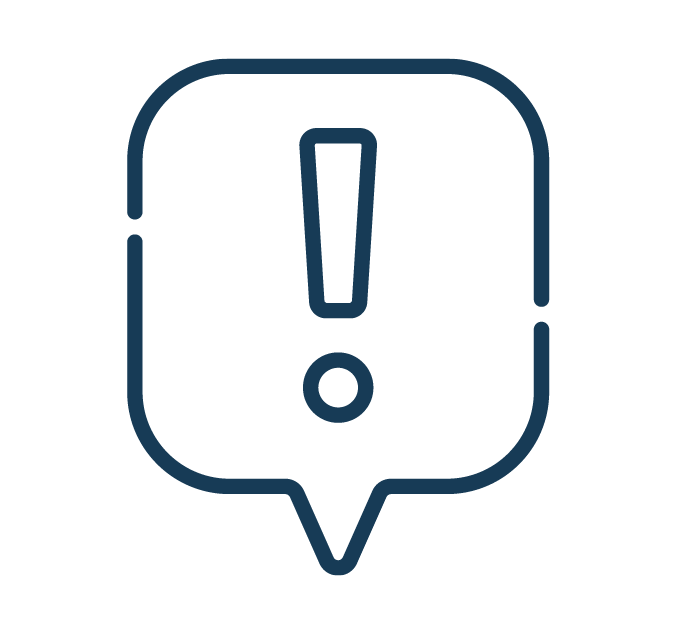What You Should Know About This Course
The impact of the AI disruption of higher education continues to evolve and we are updating content as we learn more. This course represents a curated repository of inputs from a range of sources, disciplines, and stakeholders. The experiences, examples, and emphasis of the course is on faculty and students, and it is being created in collaboration with both. We do not position ourselves as experts on these matters, rather the course weaves expertise from a diverse range of faculty in order to provide a meaningful learning experience to a diverse range of learners. There are many interactive opportunities throughout the course to share your expertise and ideas. Our primary goal is to support you in thinking through the urgent questions that the AI disruption of higher education presents and to create opportunities for you to learn from and with others so that you are confident in supporting your students as we redesign our courses and navigate this shifting landscape together.
Course Goals
- Explore AI and its implications for teaching and learning in higher education—especially those relating to academic integrity
- Critically reflect on your own theory of change as it relates to student learning and the implications of generative AI on your beliefs about course design
- Evaluate examples (good and bad) of courses and course elements redesigned for AI
- Experiment with AI tools, redesign assignments, and get feedback
- Access a (growing and evolving) repository of research on teaching with AI
- Exchange ideas on topics related to AI in the college classroom and higher ed writ large with others in the course
- Engage your own department colleagues in the conversation to ensure students in your program have a consistent, comparable learning experience no matter who is leading the class

This self-paced, asynchronous online course has an estimated total duration of approximately 10-15 hours. Once you complete this Getting Started module, you will unlock the course which consists of 8 engaging and interactive modules. The modules are designed to be completed in the order presented to prepare you for subsequent content. However, you are welcome to navigate between modules as needed, ensuring a flexible learning experience. Earn the AI digital badge by completing the 8 assignments, one in each module.
Course Content
Click on the expanders below to get a glimpse into what each module in this course will discuss
Module 1: What Do I Need to Know About AI?
Provides an overview of key terms, a current and growing list of the AI tools available, and a brief spotlight on Grammarly—a popular and well known AI tool that many in academia already use—and other instances of AI in our daily lives.
Module 2: What are the Ethical Considerations of AI in Our Higher Ed Context?
Considers the ethical implications of using AI tools from the student, faculty, and institutional perspective. How will these tools impact academic integrity and the accreditation process for individual programs? What policies are different institutions implementing? How are different disciplines engaging in conversations about authorship, attribution, and academic integrity?
Module 3: What is Learning and How Will AI Tools Affect the Courses I Teach?
Consider your theory of change as it applies to student learning to determine what is the essential work of the mind, how AI tools can replicate intellectual activities once thought to be unique to human intelligences, and what the future of our courses and education systems should look like.
Module 4: How are Students Using AI Tools and How Can I Partner With My Students?
Engage with ideas, feedback, and data gathered from students about how they are using AI tools in their classes, how they are thinking about the ethical implications and their own learning, what they hope faculty know and consider as they redesign courses, and their impressions of how these tools will impact their (choice of) major, their career goals, and other aspects of their personal and professional lives moving forward.
Module 5: What Do I Need to Rethink in Terms of the Exams, Papers, or Projects I Assign?
Explore resources and examples of assignments that are responsive to AI tools through the lens of broad academic disciplines (e.g. STEM, Humanities, Arts, Social Sciences, Business). You will have opportunities to explore examples, design assignments to use in your own courses, and give and receive feedback from others.
Module 6: How Do I (Re)Design Courses in the Wake of the AI Disruption?
Create a redesign plan that integrates what you have learned about AI tools and how you plan to implement them in your courses on a scale and timeline that fits with your professional role and responsibilities. This module includes sample syllabus statements that articulate AI policies that faculty can use or build from.
Module 7: What Other AI Tools or Capabilities are Coming and How Do I Design for Them?
ChatGPT represents a breakthrough moment for AI, but many more robust and sophisticated tools are coming—quickly. In this module we share what tech experts predict and invite you to weigh in with your own thoughts and predictions about the potential implications of evolving AI technology for higher education in the near and not too distant future.
Module 8: What Conversations Need to Happen in My Department or Discipline and What is My Role?
Reflect on how your discipline and department is engaging in conversations about redesigning courses for AI tools. Consider your role in shaping (or in some cases, initiating) these conversations to ensure students who go through your program have an equitable and consistent experience no matter who teaches the course. What might your colleagues and students gain if you share your experiences redesigning courses in response to the AI disruption? You will have access to examples and resources to support your scholarship, leadership, and ongoing learning on these topics.
Iconography
- Throughout this course, you will notice several icons. These signal different ways of interacting with the content and provide opportunities to reflect on or experience what you are exploring in each module.
Explore

Play

Articulate

- Four additional icons used throughout the course indicate the lens through which either the content was written or suggestions for how to approach the different categories.
Technical

Relating to artificial intelligence terms and tools
Pedagogical

Relating to the design and delivery of courses
Theoretical

Relating to overarching frameworks or models that arise from, and encompass, our beliefs and values related to course topics
Ethical

Relating to moral or legal issues or definitions concerning plagiarism, academic honesty, intellectual property, security, and privacy

AUAI Explorer
You can earn the AUAI Explorer badge by completing eight tasks (one per module). Each of these tasks is related to the module content and will help you make connections between what you are learning in the course and how you can use AI in your classroom. Your submissions will be reviewed by an educational developer in the Biggio Center Teaching Unit, and you will receive formative and summative feedback on each submission to help you improve or advance your learning. If your submission does not meet the stated criteria, you will have the opportunity to use the feedback you receive to re-submit the assignment. Participants who successfully complete all eight assignments will receive the certification, e.g. digital badge. Read on to learn more about what a digital badge is and how it compares to a traditional paper certification.

Important!
This course is made available to learners for educational and informational purposes only. Accordingly, Auburn, its employees, officers, and agents accept no liability whatsoever for the consequences of any such inaccurate or misleading data, opinion, or statement. By continuing in this course, you agree to defend, indemnify and hold harmless Auburn, its officers, directors, trustees, employees, agents and third-party suppliers and licensors from and against any claims, actions, demands, judgments, liabilities, fines, penalties and expenses, including but not limited to reasonable attorneys fees, resulting from or alleged to result from, your use of or reliance upon any materials in this course.
Copyright of Auburn University